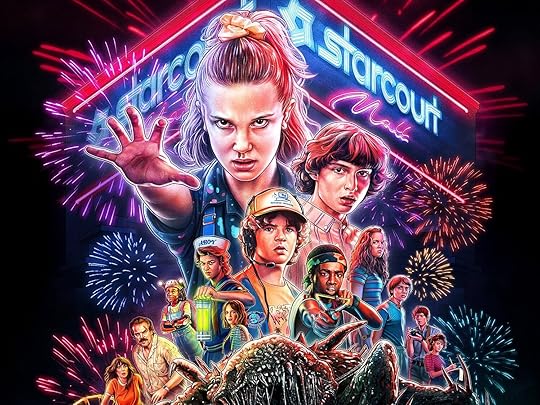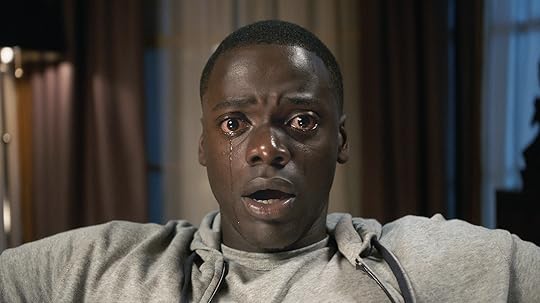Beyond the Expected: The Art of Subverting Genre Tropes.
Genre tropes are like the secret ingredients in the storytelling recipe. They’re the familiar building blocks that give shape and structure to narratives, providing audiences with a comforting sense of recognition.
Imagine settling in to watch a rom-com and immediately spotting the “meet-cute” or diving into a horror flick and bracing for the “final girl.” While these tropes create a sense of familiarity, they also open the door to innovation and creativity.
In this blog post, I’ll dive into the significance of genre tropes, discuss when to embrace them, and explore the art of subverting expectations to craft engaging and thought-provoking narratives.
Understanding Genre Tropes.At its core, a genre trope is a recurring theme, motif, or cliché that helps define a specific genre. These elements guide audiences through the narrative landscape, establishing expectations and providing a framework that enhances engagement.
For instance, in romance novels, the “meet-cute” trope—where two characters cross paths in an unexpected yet endearing way—creates a sense of warmth and anticipation. Meanwhile, in horror films, the “final girl” trope, featuring the last surviving female character, builds tension while also hinting at empowerment.

#1 – The Power of Familiarity.
One primary reason writers use tropes is to establish familiarity with their audiences. Tropes help quickly create a world, develop characters, or introduce conflicts without heavy exposition.
Think about it: when you see a grizzled bounty hunter in a sci-fi universe, you immediately understand the character’s role, thanks to the archetype’s established traits.
This familiarity allows writers to delve into deeper emotional storytelling without explaining every detail.
Take The Mandalorian, for instance. It masterfully employs the “Lone Wolf and Cub” trope—a familiar narrative in which a solitary warrior protects a vulnerable child.
Din Djarin (Pedro Pascal), the titular Mandalorian, embodies the classic Western antihero, haunted yet honourable. His unexpected bond with “The Child” (a.k.a. Baby Yoda) flips the script, transforming him from a lone gunslinger into a reluctant yet devoted father figure. Audiences instantly grasp the emotional stakes of this relationship, setting the stage for a rich character arc.
 #2 – Building Anticipation Through Tropes.
#2 – Building Anticipation Through Tropes.
Tropes are not just familiar; they can also be powerful tools for building anticipation. By playing on established audience expectations, creators can weave tension and suspense into their narratives.
This is all about timing and delivery—hinting at an inevitable event and then keeping viewers on the edge of their seats.
Consider A Quiet Place, a film that pivots on the “Silence is Survival” trope.
In this post-apocalyptic world, even the tiniest sound could lead to deadly consequences, creating a relentless atmosphere of tension. The monsters lurk in the shadows, rarely seen but always felt, heightening the audience’s anxiety.
Everyday activities—like breathing or stepping on a creaky floorboard—become fraught with peril, leaving viewers gripping their seats. This slow build-up of tension is a masterclass in how to harness tropes for maximum emotional impact..

#3 – Nostalgia: The Warm Blanket of Familiar Tropes.
Who doesn’t love a good dose of nostalgia?
Tropes can tap into shared cultural memories, whisking audiences back to beloved eras of storytelling. By referencing familiar motifs, creators can evoke feelings of warmth and fondness, creating a bridge between the past and present.
Stranger Things is a prime example of how nostalgia can be harnessed through tropes. The show is a love letter to the 1980s, brimming with pop culture references, and featuring a group of misfit kids embarking on a grand adventure.
The small town setting and shadowy government conspiracies echo the classic 80s films like The Goonies and E.T., enveloping viewers in a comforting embrace of familiarity. The synth-heavy soundtrack and retro visuals further amplify the nostalgic experience, drawing both older viewers and newcomers alike into its web of memories.
When to Subvert Tropes.While embracing tropes can create comfort and familiarity, subverting them is where the magic truly happens. Subverting tropes involves taking a familiar narrative element and flipping it on its head, prompting audiences to reassess their expectations.
This technique can lead to surprising twists, deepen emotional resonance, and offer fresh perspectives on traditional storytelling.

#1 – Breaking the Mold with Gone Girl.
Gone Girl, directed by David Fincher, is a brilliant case study that subverts the “Unreliable Narrator” trope while challenging the “Perfect Marriage” trope.
At first glance, the film presents Nick and Amy Dunne as a seemingly perfect couple living the American dream. However, as the layers peel away, the facade crumbles, revealing a toxic and deeply flawed relationship.
The dual narratives—Nick’s present-day perspective and Amy’s diary entries—create an illusion of understanding that is shattered when Amy’s elaborate revenge plot unfolds. This twist forces audiences to reevaluate their perceptions and reflects the darker sides of femininity and societal expectations in marriage.

#2 – Character Complexity in Mad Max: Fury Road.
Another noteworthy example is Mad Max: Fury Road, where director George Miller subverts character tropes to develop complexity. Max Rockatansky, the anti-hero, is not merely defined by his thirst for revenge or glory; he embodies trauma and survival instincts.
Furiosa emerges as the film’s true protagonist, showcasing strength, resilience, and agency in a patriarchal landscape.
The “Five Wives” initially presented as objects of desire instead become active participants in their escape, defying the “damsel in distress” trope. This character subversion adds layers to the narrative and challenges traditional gender roles in action films, showcasing a nuanced exploration of power dynamics.

#3 – Social Commentary Through Subversion in Get Out.
Subverting tropes is a powerful way to comment on societal norms and expectations.
By twisting familiar narratives, creators can illuminate cultural critiques and provoke thought, encouraging audiences to reevaluate their perceptions of the world.
Jordan Peele’s Get Out is a masterclass in this regard. It cleverly subverts the “Black Man in a White World” trope, leading audiences to expect a typical horror narrative. Instead, Peele explores systemic threats embedded in society.
The well-meaning white family that initially appears welcoming hides a sinister agenda, revealing the uncomfortable realities of cultural appropriation and exploitation.
The film’s powerful metaphor, the “Sunken Place,” encapsulates the feeling of being trapped and powerless in a society that seeks to control marginalized individuals. Chris’s ultimate survival and confrontation with his oppressors subvert typical horror film resolutions, delivering a message of agency and resistance against systemic racism.
In Conclusion – genre tropes are indispensable tools for storytellers. They can create familiarity and comfort while also challenging and surprising audiences. Understanding when to embrace these conventions and when to subvert them is essential for crafting narratives that resonate deeply with viewers.
Whether you’re a novelist, screenwriter, or simply a lover of stories, consider how you might use or play against these beloved tropes to enrich your characters and narratives.
The best stories balance the familiar with the unexpected, weaving intricate tapestries that reflect the complexity of the human experience. So, the next time you sit down to create, remember: it’s not just about telling a story—it’s about engaging your audience in a journey that challenges and delights. Happy writing!
Now it’s YOUR turn – What tropes do you believe are overused or outdated in today’s storytelling?
Would love to get your input in the comment box below.
The post Beyond the Expected: The Art of Subverting Genre Tropes. appeared first on Vered Neta.



